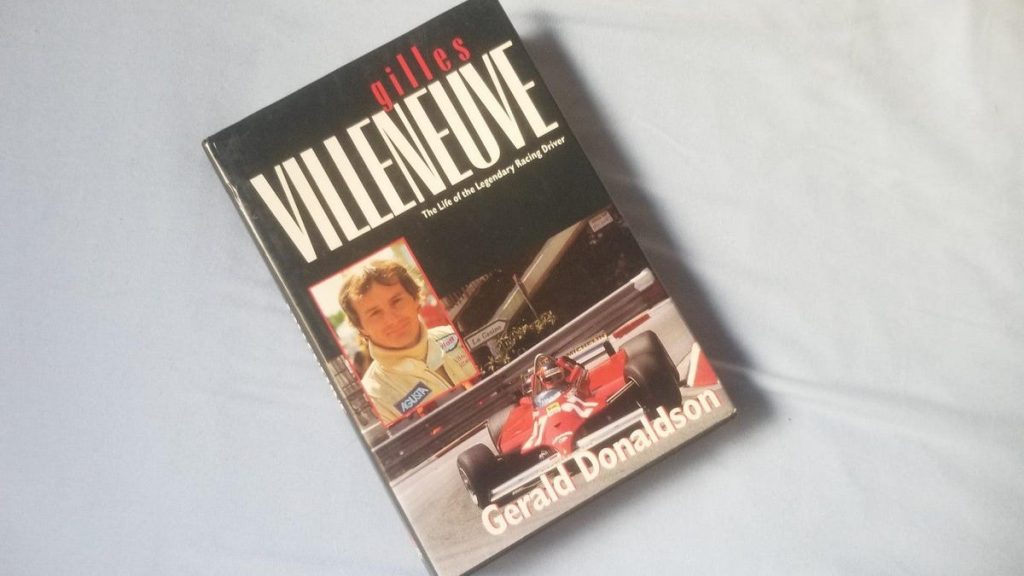This Gilles Villeneuve Biography Doesn't Shy Away From the Hardships of Motorsport

Photo: Elizabeth Blackstock
In motorsport, the dueling forces of tragedy and create psychologically complex reasons for people to tune into a race. No one wants to see a beloved driver die, but there’s a recognition that death can be a natural consequence of the endless pursuit of speed — bringing with it a deep sense of tragedy that lingers for years. Perhaps no book captures that quite as well as Gerald Donaldson’s 1989 biography of a Canadian legend, Gilles Villeneuve: The Life of the Legendary Racing Driver.
G/O Media may get a commission
Originally penned in the years immediately following Villeneuve’s tragic death at Zolder, I was struck by the honesty of this biography. When a popular racing figure dies, there can be a tendency to rewrite their life story in a more heroic light; think of Dale Earnhardt and Ayrton Senna, controversial figures in their day who became deeply revered in death, to the point where it can feel sacrilegious to express a negative opinion about either man.
Donaldson could have fallen into a similar trap with his Villeneuve biography, but he didn’t. Yes, the overall tone of the book is sympathetic to Villeneuve, a poor kid who ascended from life in an uninsulated trailer while snowmobiling his way across Canada to the ranks of Formula 1 in a frankly stellar fashion.
But Donaldson is also willing to discuss Villeneuve’s complexities. While considered a relatively simple person in the scope of racing drivers — Villeneuve, for example, much preferred a regular diet of meat and potatoes as opposed to the luxurious dishes found in Europe, and he was happy to avoid swanky hotels and camp out next to F1 race circuits in a trailer with his family — Villeneuve frankly crashed on the international racing scene. On the track, he was single-minded and aggressive; though he was also considered a shrewd and fair competitor, his peers also considered his flat-out driving style to be a danger. Off the track, too, Villeneuve was by no means the ideal family man.
G/O Media may get a commission
First Bag Free
Atlas Coffee Club – Free Coffee
Explore global coffee
With each bag, Atlas includes details on the coffee’s tasting notes and a postcard about the region and its coffee history. And when you subscribe, you have options to tailor frequency, grind size, and roast preference of your beans, so you’ll always be brewing the perfect cup.
That latter point is perhaps what struck me the most. I’ve read a lot of racing driver biographies where the author tends to minimize a racer’s personal life, often reducing it to a mere footnote or describing spousal spats or extramarital affairs with an almost blasé, “boys will be boys” attitude. Not so here: Villeneuve’s wife Joann is given ample page space to share the impact that racing had on her and her children.
She and Villeneuve married young and poor, and Joann describes how her husband never hesitated to leave her alone at home with two young children in an uninsulated trailer he’d purchased and then left on cinderblocks in an empty lot. As her husband used all of the family’s money (and then some) to compete in snowmobile races across Canada, Joann was left at home with an infant and a toddler, bundling them up against the elements when the heater broke, crawling under the house to blast frozen pipes with a blowtorch to get running water. Later, Joann was upset by her husband’s lack of a home life, his preferential treatment of one child over the other, the way he spent his ample fortunes on a whim while offering Joann and the children a meager stipend.
Even further, Donaldson is willing to dive into some of Villeneuve’s insecurities and concerns, including his height, his hairline, and his extramarital affair with a woman from Toronto.
There are positives alongside those negatives. Donaldson runs through Villeneuve’s career on an almost race-by-race basis, describing the Canadian’s incredible drives with reverence and drawing on quotes from fellow drivers or Ferrari team personnel to paint a portrait of a simple, almost naive competitor whose passion for racing made him a respected figure in the F1 paddock — once his first, spin-prone years were behind him. Even further, Villeneuve was welcomed into the Ferrari garage as a family member, something that few drivers ever accomplished.
I also appreciated the way Donaldson used quotes from Villeneuve. As his career progressed, his sentiment remained largely the same: He was the kind of racer who cared less about the World Championship than he did about being spectacular. Time and again, Villeneuve reiterates that he’d rather set the fastest lap and finish in 14th than score points, that he’d rather crash out of the lead than pit for repairs. His goal was to win races at whatever cost, but if he couldn’t do it, he was fine with going balls-out and putting on a spectacular show for the fans until he took the checkered flag or wore his car to the ground. Villeneuve had a particular, stubborn way of driving, and Donaldson let the man speak for himself.
Of course, the defining moment of Villeneuve’s career ended up being the crash that killed him, and the moments leading up to it. Villeneuve is portrayed with a general innocence throughout the book (though it’s clear that trait isn’t always a good one), so when teammate Didier Pironi knuckled his way past Villeneuve for the win at the 1982 San Marino Grand Prix, it was much to the Canadian’s shock and dismay. Villeneuve had generally considered himself close friends with his teammates, and Pironi was no exception — until that moment.
Donaldson doesn’t try to read into Villeneuve’s mind; instead, he draws on quotes from those close to the man to give a sense of the Canadian’s headspace as he approached his final qualifying session at Zolder. Villeneuve was deeply hurt. He felt betrayed. In retrospect, Pironi’s move wasn’t terribly shocking — motorsport can be cruel, and drivers often take advantage of a teammate for their own best interest.
Villeneuve, though, had never experienced anything like it. It forced him to reevaluate everything in his life, from his racing career right down to the relationships he kept up in his personal time. It left him so completely off-kilter that he was unable to compartmentalize his concern. Many believe it was the Pironi incident that left Villeneuve pushing too hard on his cool-down qualifying lap, the one that saw him crashing into the back of Jochen Mass and ultimately being catapulted to his death.
Donaldson doesn’t need to be heavy-handed in explaining the tragedy here; rather, he helps readers experience it eloquently with his description of the crash itself and the subsequent reaction to it. With the book’s publication coming just seven years after Villeneuve’s death, there was no time for lengthy reflection on Villeneuve’s impact on the racing world.
As a reader in 2022, that’s something I’ve been sitting with since I put this book down. I don’t know how readers received the book upon its initial release, but more than three decades removed from that date — and four decades removed from Villeneuve’s death — the book serves as an incredible recollection of one man’s life and helps explain why, exactly, this tiny Canadian who never won a Championship can remain such a tangible part of modern motorsport history.




